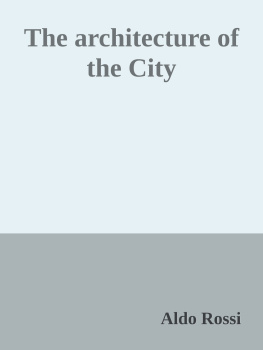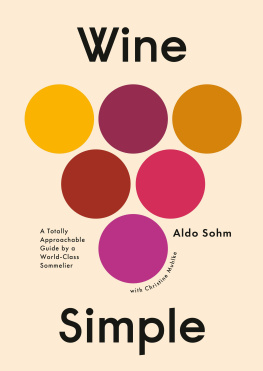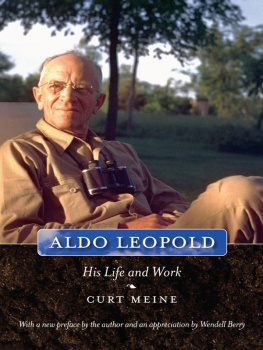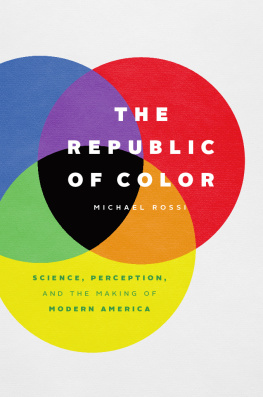Aldo Rossi - The Architecture of the City
Here you can read online Aldo Rossi - The Architecture of the City full text of the book (entire story) in english for free. Download pdf and epub, get meaning, cover and reviews about this ebook. year: 0, genre: Science. Description of the work, (preface) as well as reviews are available. Best literature library LitArk.com created for fans of good reading and offers a wide selection of genres:
Romance novel
Science fiction
Adventure
Detective
Science
History
Home and family
Prose
Art
Politics
Computer
Non-fiction
Religion
Business
Children
Humor
Choose a favorite category and find really read worthwhile books. Enjoy immersion in the world of imagination, feel the emotions of the characters or learn something new for yourself, make an fascinating discovery.
- Book:The Architecture of the City
- Author:
- Genre:
- Year:0
- Rating:3 / 5
- Favourites:Add to favourites
- Your mark:
- 60
- 1
- 2
- 3
- 4
- 5
The Architecture of the City: summary, description and annotation
We offer to read an annotation, description, summary or preface (depends on what the author of the book "The Architecture of the City" wrote himself). If you haven't found the necessary information about the book — write in the comments, we will try to find it.
The Architecture of the City — read online for free the complete book (whole text) full work
Below is the text of the book, divided by pages. System saving the place of the last page read, allows you to conveniently read the book "The Architecture of the City" online for free, without having to search again every time where you left off. Put a bookmark, and you can go to the page where you finished reading at any time.
Font size:
Interval:
Bookmark:
The architecture
of the City
Aldo Rossi
OPPOSITIONS BOOKS
Introduction by Peter Eisenman Translation by Diane Ghirardo and Joan Ockman
Revised for the American Edition by Aldo Rossi and Peter Eisenman
Published for The Graham Foundation for Advanced Studies in the Fine Arts, Chicago, Illinois, and
The Institute for Architecture and Urban Studies, New York, New York, by:
The MIT Press
Cambridge, Massachusetts, and London, England
First paperback printing, 1984
Copyright 1982 by
The Institute for Architecture and Urban Studies and
The Massachusetts Institute of Technology
All rights reserved. No part of this book may be reproduced in any form or by any means, electronic or mechanical, including photocopying, recording, or by any information storage and retrieval system, without permission in writing from the publisher.
Library of Congress Cataloguing in Publication Data
Rossi, Aldo, 1931 The architecture of the city. (Oppositions books)
Translation of: L'architettura della citta.
"Published for the Graham Foundation for Advanced Studies in the Fine Arts, Chicago, Illinois, and the Institute for Architecture and Urban Studies, New York,
New York." Includes index.
1. City planning. 2. Architecture.
I. Eisenman, Peter, 1932
II. Title.
III. Series.
NA9031. R6713 711'. 481 19382
ISBN 13: 978 0 262 18101 3 (he. alk. paper)
978 0 262 68043 ( pb . alk. paper)
Typography by The Old Typosopher in Century Expanded. Printed and bound in the United States of America.
Cover drawing: Wooden armature for the construction of vaults. From Principj di Architettura Civile, Francesco Milizia, 1832.
Other titles in the OPPOSITIONS BOOKS series:
Essays in Architectural Criticism: Modem Architecture and Historical Change
Alan Colquhoun
Preface by Kenneth Frampton
A Scientific Autobiography
Aldo Rossi
Postscript by Vincent Scully Translation by Lawrence Venuti
OPPOSITIONS BOOKS
Editors
Peter Eisenman Kenneth Frampton
Executive Editor Joan Ockman Managing Editor Lindsay Stamm Shapiro Assistant Editor
Thomas Mellins, Designer Massimo Vignelli, Design Coordinator Abigail Sturges, Production Susan Hull
Trustees of the Institute for Architecture and Urban Studies
Armand Bartos, Chairman Charles Gwathmey, President Douglas H. Banker
Richard F. Barter, A. Bruce Brackenridge, Colin G. Campbell, Walter Chatham,
Peter D. Eisenman, Ulrich Franren, Frank 0. Gehry, Gerald D. Hines, Eli Jacobs,
Philip Johnson, Edward J. Logue, Gerald M. McCue, Robert M. Meltzer, Paul Rudolph
Carl E. Schorske, Frederieke S. Taylor, Marietta Tree, Massimo Vignelli, John F. White,
Peter Wolf
Contents
* subscript 3-4 indicates hardcover page numbers (Notes & bibliography are mixed)
- Editor's Preface
3-4 The tradition of the architect-writer is well precedented in the history of architecture in Italy. From the Renaissance to the nineteenth century, it was characteristic of certain architects to present their ideas in a systematic treatise. Based on the model of Vitruvius, Alberti produced the Renaissance model for such writing. This was followed by treatises like those of Serlio and Palladio. Serlio produced a series of volumes which constitute a handbook of architecture, starting with ancient building and including speculations about unbuilt future work. These unbuilt designs, which were to become more important than his modest built work, are not so much significant in terms of specific projects, but are rather models which begin to elaborate many of the types to which Palladio would refer. Palladio wrote the "Quattro Libri" ten years before his death, as a kind of resume of his career. These books contain the redrawing of his projects and buildings, thereby serving as much as a record of his intentions as of his actual work. Whether drawing Roman ruins or redrawing his own projects, Palladio was primarily interested in the derivation, invention, and ultimately the distortion of types from existing models. thus, the idea of the interrelationship of drawing and writing became part of an architectural tradition.
This tradition has continued in Italy up to the present century. The writings of Scamozzi, Milizia, and Lodoli, not to mention the more recent writings and designs of Giuseppe Pagano, certainly must be seen as its bearers, as, indeed, must Aldo Rossi's "The Architecture of the City." To understand Rossi's architecture, it is also necessary to understand his writings and his drawings. Yet "The Architecture of the City" is also a significant departure from past models. This is because, while purporting to be a scientific theory, a modern-day equivalent of the Renaissance treatise, it is on another level a unique anticipation of Rossi's subsequent architecture.
The task of this preface, then, is to locate this book for an American audience not only in its own tradition, in the context of Italian theoretical writings by architects, but also in the more contemporary context of Italy in the 1960s and 1970s. The first edition of this book, taken from Rossi's lectures and notes, appeared in 1966 during the traumatic years of student discontent as a polemical critique of the Modern Movement position on the city. A second Italian edition appeared in 1970 with a new introduction. The book was then translated into Spanish, German, and Portuguese editions. Finally, in 1978, a fourth Italian edition appeared with new illustrations. To reissue it now, in its first English language edition, with all of the supplementary material that it has acquired during its successive publications, is to recognize the unique cultural context within which it was first produced and continued to develop; all of this material is part of the book's history. In this way, the book stands as a singular and parallel record of ideas that Rossi has been developing in both drawing and other writing over the last fifteen years. As such, it is in itself an "analogous artifact."
In its American edition, "The Architecture of the City" is not so much a literal transcription of the original as a carefully revised edition revised so as to provide the style and flavour of the original without encumbering it with some of the rhetorical and repetitive passages which are part of the original text.
The rather academic style of presentation in the Italian occasionally makes for a certain stiltedness in English, and in such cases, we have preferred to opt for clarity and simplicity.
My own introduction which follows is in certain ways not only about this book, but also about the Rossi that this book anticipates. In this sense, it is a kind of analogous writing of Rossi's ideas. Like his analogous drawings, and his writings which also can be seen as analogous instruments, it attempts to collapse and dislocate the time and place of the evolution of Rossi's ideas. For this reason, it is taken from a reading of his later writings, including "A Scientific Autobiography, " and from many private discussions with him, as much as from the text at hand. Like the fourth Italian edition, which brought together the preceding pieces of the book's history, all of which themselves had separate memories, this book is similarly, and to an even greater degree, a "collective" artifact. My own introduction attempts to enter into this memory and in this sense serves as a kind of analogy of an analogy, a creation of yet another artifact with its own history and memory. It seeks in this way to illustrate the analogous current which washes back and forth from drawing to drawing, and from writing to writing, in Rossi's work.
P. E.
...the relief and design of structures appears more clearly when content, which is the living energy of meaning, is neutralized, somewhat like the architecture of an uninhabited or deserted city, reduced to its skeleton by some catastrophe of nature or art. A city no longer inhabited, not simply left behind, but haunted by meaning and culture, this state of being haunted, which keeps the city from returning to nature...
Next pageFont size:
Interval:
Bookmark:
Similar books «The Architecture of the City»
Look at similar books to The Architecture of the City. We have selected literature similar in name and meaning in the hope of providing readers with more options to find new, interesting, not yet read works.
Discussion, reviews of the book The Architecture of the City and just readers' own opinions. Leave your comments, write what you think about the work, its meaning or the main characters. Specify what exactly you liked and what you didn't like, and why you think so.













